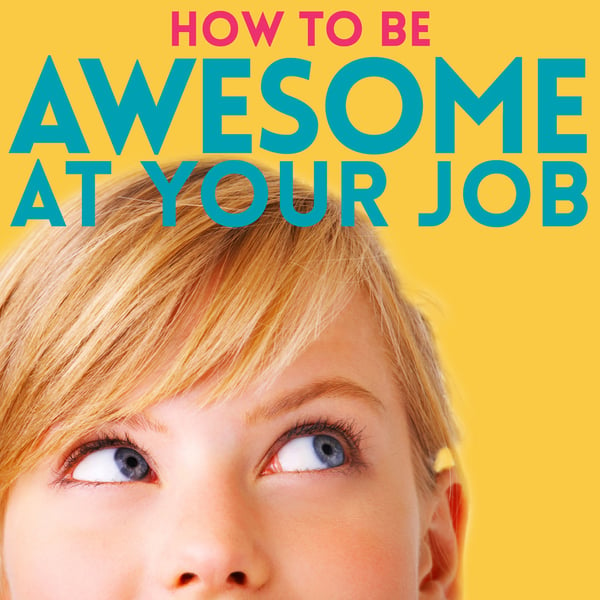1067: Better Decisions through Neuroscience with Emily Falk
How to Be Awesome at Your Job
How to be Awesome at Your Job
4.6 • 1K Ratings
🗓️ 16 June 2025
⏱️ 44 minutes
🧾️ Download transcript
Summary
Emily Falk reveals the hidden science behind how we make decisions—and how we can harness that to make more fulfilling choices.
— YOU’LL LEARN —
1) How to make doing hard things easier
2) The one belief that’s limiting your possibilities
3) How to disarm resistance to change
Subscribe or visit AwesomeAtYourJob.com/ep1067 for clickable versions of the links below.
— ABOUT EMILY —
Emily Falk, author of the upcoming book What We Value, is a professor of communication, psychology, and marketing at the University of Pennsylvania and the vice dean of the Annenberg School for Communication, where she directs the Communication Neuroscience Lab and the Climate Communication Division of the Annenberg Public Policy Center.
Falk is an expert in the science of behavior change. Her award-winning research uses tools from psychology, neuroscience, and communication to examine what makes messages persuasive, why and how ideas spread, and what makes people effective communicators.
In What We Value, Falk illustrates how we can transform our relationship with the daily decisions that define our lives—opening pathways to make more purposeful, fulfilling choices; more successfully change our behavior; and influence others to see differently—by thinking like neuroscientists.
• Book: What We Value: The Neuroscience of Choice and Change
• Study: “Self-affirmation alters the brain's response to health messages and subsequent behavior change”
• LinkedIn: Emily Falk
• Website: FalkLab.org
— RESOURCES MENTIONED IN THE SHOW —
• Study: “Decoding the neural representation of self and person knowledge with multivariate pattern analysis and data‐driven approaches” by Dylan D. Wagner, Robert S Chavez, and Timothy W. Broom
• Study: “Neural responses to elements of a web-based smoking cessation program” by Hannah Faye Chua, et al.
• Term: Mental contrasting with implementation intentions (MCII)
• Researcher: Sebastian Speer
• Book: By the Grace of the Game: The Holocaust, a Basketball Legacy, and an Unprecedented American Dream by Dan Grunfield
• Book: How to Stand Up to a Dictator: The Fight for Our Future by Maria Ressa
• Past episode: 664: Dr. Robert Cialdini on How to Persuade with the 7 Universal Principles of Influence
— THANK YOU SPONSORS! —
• Strawberry.me. Claim your $50 credit and build momentum in your career with Strawberry.me/Awesome
• Quince. Get free shipping and 365-day returns on your order with Quince.com/Awesome
See Privacy Policy at https://art19.com/privacy and California Privacy Notice at https://art19.com/privacy#do-not-sell-my-info.
Transcript
Click on a timestamp to play from that location
| 0:00.0 | We often focus so much on distant outcomes and on doing the thing that we think is going to be the best for us, that we disregard or downweight the thing that actually is going to make the process joyful. |
| 0:24.7 | We imagine that we're making decisions independent of lots of other factors, |
| 0:30.5 | but the data really bear out the idea that our brains value systems are deeply influenced |
| 0:36.3 | by what other people are thinking and feeling and doing. |
| 0:50.3 | That's Emily Falk. She's an award-winning researcher who serves as the director of the communication neuroscience lab at the University of Pennsylvania. |
| 0:57.7 | And she shares a lot of wisdom from her research in her book, What We Value, the Neuroscience of Choice and Change. |
| 1:04.1 | So you'll learn one, how to make doing hard things easier. |
| 1:07.0 | Two, the one belief that's limiting your possibilities. |
| 1:10.2 | And three, how to disarm resistance to change. |
| 1:13.4 | I'm Pete McItis. This is How to Be Awesome at your job. And now, here's Emily. |
| 1:21.4 | Emily, welcome. Thanks so much for having me, Pete. Oh, thank you. I'm excited to hear some of your goods. So then tell us |
| 1:29.9 | with your book, what we value. What's the big idea, our core message here? Well, the big idea in |
| 1:34.6 | what we value is that our brains shape what we value. And that happens in ways that we might not |
| 1:39.9 | realize as they're unfolding. And my hope is that if people can understand how their brains are |
| 1:45.3 | calculating value, that that has potentially a lot of benefits, that one possibility is that we can |
| 1:50.9 | feel more compassion for ourselves and for other people when we make decisions that, like, |
| 1:55.8 | don't necessarily make sense to us. It might also help us make choices a little bit differently |
| 2:00.5 | or also communicate more |
| 2:02.4 | effectively with one another. So the book is in three parts, right? There's the first part that |
| 2:06.6 | explains how this all unfolds in the brain. Then there's a second part that focuses on what we might do |
| 2:12.1 | if we want to change those kinds of processes. And then the third part focuses on how we connect |
| 2:16.7 | with other people. |
... |
Please login to see the full transcript.
Disclaimer: The podcast and artwork embedded on this page are from How to be Awesome at Your Job, and are the property of its owner and not affiliated with or endorsed by Tapesearch.
Generated transcripts are the property of How to be Awesome at Your Job and are distributed freely under the Fair Use doctrine. Transcripts generated by Tapesearch are not guaranteed to be accurate.
Copyright © Tapesearch 2025.

